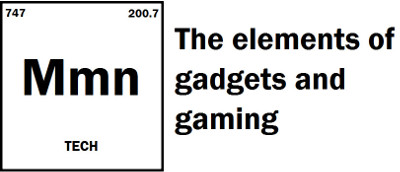

Is desktop Linux usable for normies yet?
Linux is the most popular operating system in the world, running on everything from supercomputers to your fancy Bluetooth coffee pot. Even Android is built upon its base, meaning that the penguins control over 72% of the mobile phone market. So chances are you’ve probably used it at some point. Yet it only runs on about 2-4% of all desktops and laptops, give or take. Linux is absolutely dwarfed by even Apple’s expensive fruit themed operating system, which itself is dwarfed by the Windows juggernaut. You’d certainly think something that’s literally free for anyone to use and customise would be a lot more popular than it is. So why do so few individuals and manufacturers use it?
Well, I think a big part of the problem is Linux’s reputation. It’s still largely seen as an OS that runs on some arcane voodoo magic that only the hardest of hardcore nerds can understand. Which was probably true at one point. However, a lot has changed in the past decade to make the platform far more user friendly. Even fully accessible to beginners.
I think it’s important to understand that Linux isn’t an operating system, but rather a family of operating systems built upon the same base. Much like how automakers build very different cars on top of the same chassis. Sure, those hardcore nerd versions, that operate strictly in the command line, do exist. But them you have ones like Ubuntu, Elementary, Zorin, and Mint, which strive to offer an easy and out-of-the-box experience for newcomers to uses as their daily driver.
As an OS for regular people, not power users, Linux is almost there. Much like economical fusion power is always just 10 years away. It still has a lot of quirks, foibles, and limitations that are keeping the less tech initiated away.
Now, there’s definitely a lot to dislike about the two main “closed source” operating systems out there. Windows of course being the greater of two evils.
Microsoft has been shifting towards a service based platform, much like Android and iOS are. They want to lock you into an ecosystem and gobble up your personal data, which can then be sold to the highest bidder. After all, that’s how Google became as big as they are without actually selling anything to the end users. And it’s clear as day that Microsoft wants to be Google. Meanwhile, Windows 11 has also managed to ruffle some feathers over its steep system requirements. Effectively limiting it to computers made after 2018, even though it’s really just a reskin of Windows 10. As the big boys get greedier and more intrusive, many are looking for alternatives. And if you run a PC, Linux is really your only viable option. Short of buying a Mac anyway. We won’t even get into BSD here.
The main hurdle towards Linux adoption really isn’t usability. Well, at least for the most part. It still likes to make you dive into the command line terminal more often than it should. Especially when it comes to installing a lot of software downloaded from the internet versus the package manager. And stuff still randomly breaks with updates. Though not as often as it used to. Arguably, Windows is more prone to that nowadays. However, there are a lot of distros out there that have been geared specifically towards beginners, complete with slick desktop environments like GNOME, KDE, and Cinnamon that mimic Windows and MacOS. So basically, if you can use those, you can use Linux.
But then there’s the issue with software availability. Linux doesn’t support much in the way commercial software. At least not out of the box. Perhaps the most notable of which is the Adobe Suite, which an awful lot of people use. Sure, there are just-as-good alternatives out there like GIMP for Photoshop, or Blackmagic Resolve for Premiere. But people seem comfortable using what they know. Some goes for office apps, and a myriad of other programs. Now, you can use WINE to run Windows software on Linux. But it’s janky to setup and some programs don’t play nice with it. Which isn’t exactly something most people want to deal with.
Linux Gaming is the one area that’s seem the most improvement. Largely thanks to Valve and the Proton initiative. There actually are a lot of AAA games that run natively on Linux. Others utilise a compatibility layer that is near transparent performance wise versus Windows. This is in fact what will be powering the upcoming Steam Deck handheld. Basically, if you’re running Linux, and most of your library is on Steam, you’re going to have a good time. While some games don’t play nice with Proton, that list is shrinking by the month. And will get even smaller once the Steam Deck comes out.
But then there’s issues that crop up such as incompatibility with DRM, and now more common, anti-cheat systems. And, well, everything else outside Steam. Linux support from GOG Galaxy, Epic Games Store, EA Play, U-Play, and Xbox Game Pass is either weak or completely non-existent. Meaning those games have to be added to Steam in order to run through Proton. So it’s still a rather inelegant solution which can be easily solved by just sticking with Windows, which works with everything.
GPU drivers from Nvidia and AMD also aren’t that great. AMD tends to fare a little better performance wise on Linux, but lacks any sort of graphical user interface for adjusting your settings. As far as I’m aware, the OS doesn’t even support HDR10 colour. Meanwhile, I believe Freesync can be enabled, but it has to be done via the command line. Circling back again to my previous comment about having to go into the terminal more often than you should.
A lot of this boils down to Linux being terminally open source. It doesn’t have the significant financial backing and resources that the big closed source operating systems have. Rather, it’s largely being developed by a rag tag bunch of nerds in their spare time, who don’t always cooperate, and aren’t necessarily working towards the same goals. So stuff kind of gets left by the wayside, where features just don’t get properly implemented if at all. That’s the nature of a decentralized environment that was originally designed for mainframes. Which isn’t necessarily a bad thing. If you want privacy and control, Linux is the way to go. Same when you want a stable environment to breath new life into older computers. But as a desktop OS, many regular users will still find it a bit lacking and obtuse in certain areas to make them give up Windows or MacOS entirely.
Now, that said, if you are one of those people, I wouldn’t write off Linux entirely. More and more computing is being done via the browser. Plus, much of the software that is available for the platform will more than get basic tasks done for your basic user. And it’s free with no catches. So it’s still worth messing around with to see if it meets your needs. For me, I think I’ll be moving to Linux for my next laptop, since I’ve got my Windows desktop to cover the fancy things, and having a private and customizable experience suits me to a tee.
